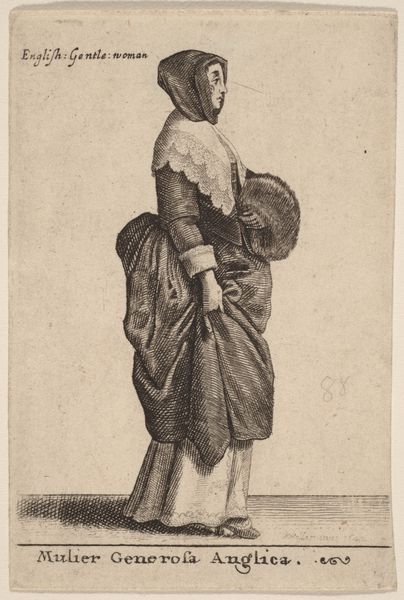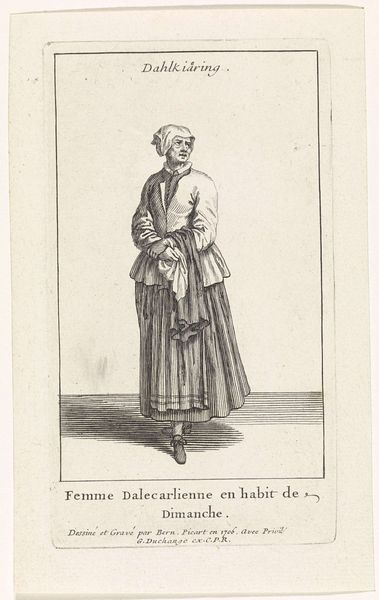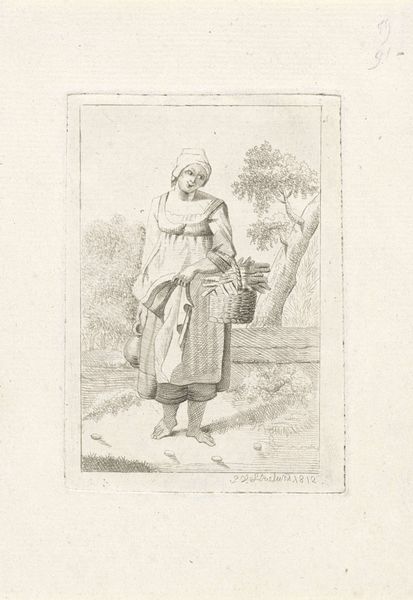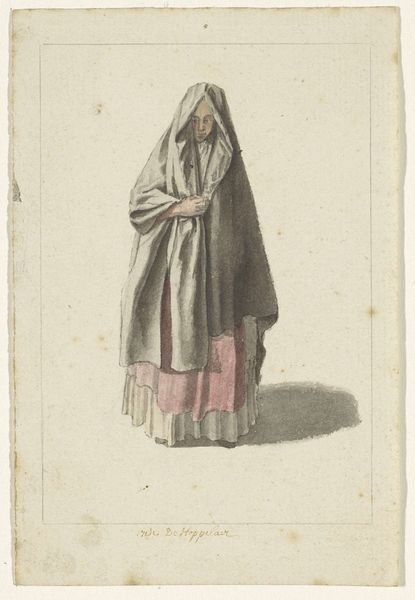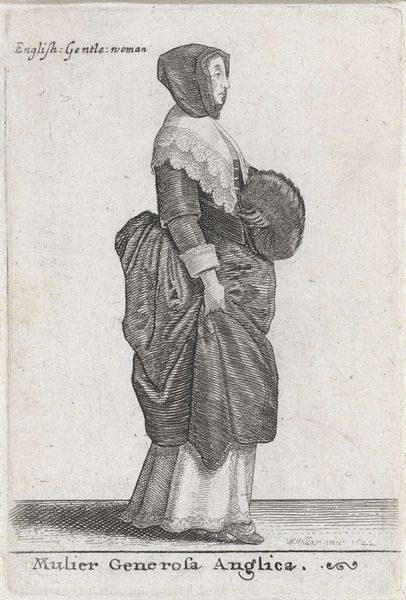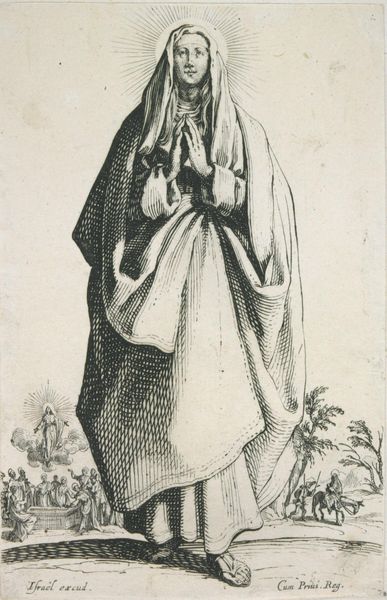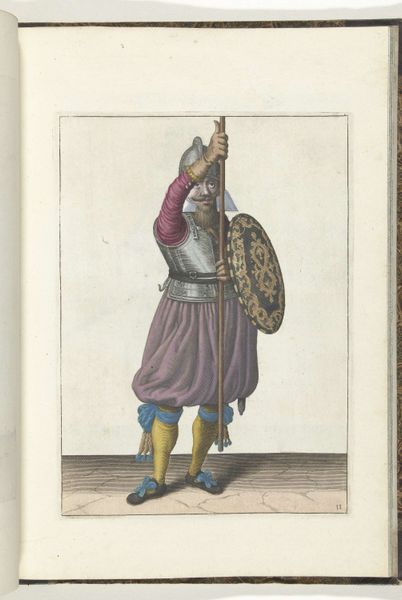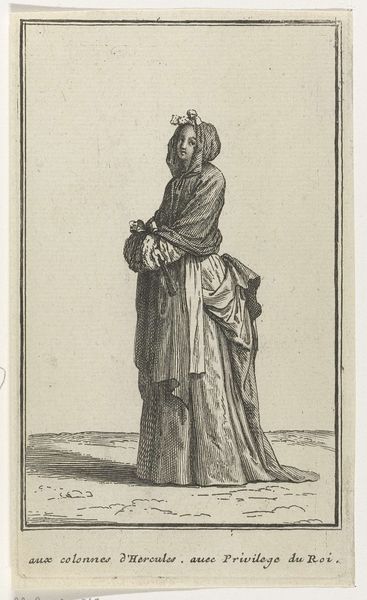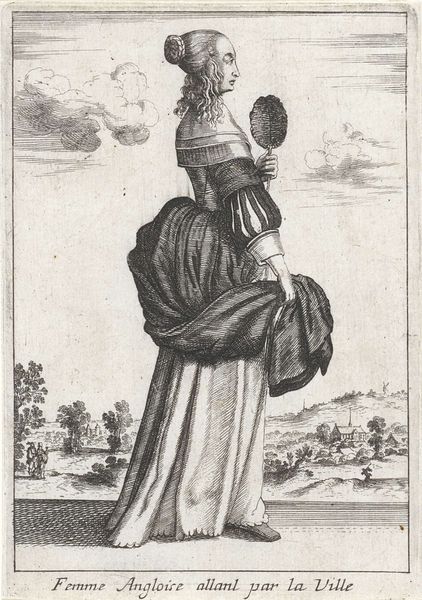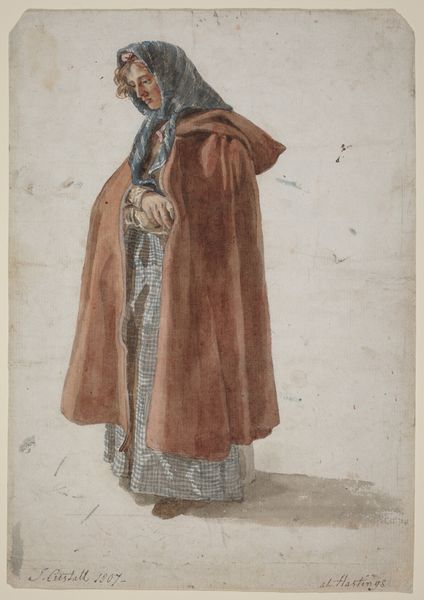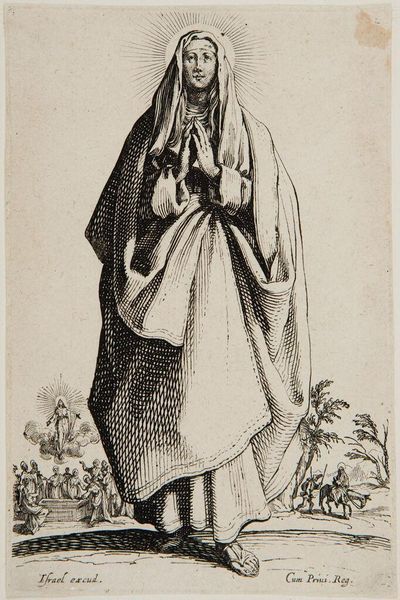
Journal des Dames et des Modes, Costume Parisien, 6 novembre 1804, An 13, (594): Jupon et Mameluck (...) 1804
0:00
0:00
pierrecharlesbaquoy
Rijksmuseum
print, etching
#
neoclacissism
# print
#
etching
#
decorative-art
#
dress
Dimensions: height 205 mm, width 117 mm
Copyright: Rijks Museum: Open Domain
Editor: This etching by Pierre Charles Baquoy, titled "Journal des Dames et des Modes, Costume Parisien," from 1804, is just lovely. The figure's dress seems so simple, almost Grecian, but that ornate shawl really pops. What do you see when you look at it? Curator: Well, consider the social context. This was during the Napoleonic era, a period of significant societal upheaval. The etching itself is a product of burgeoning print culture and fashion's growing importance as a marker of social status. How do you think the depicted dress reflects these changes? Editor: It looks… less ornate than the clothing I associate with pre-revolution France. Almost like a rejection of the past. Curator: Precisely. This reflects a shift toward simpler, more "republican" aesthetics, drawing inspiration from classical antiquity. But note how it's published in a journal—a rapidly expanding form of media aimed at women. This connects female identity and societal expectations with specific styles. Consider what the circulation of such images meant in shaping tastes and driving consumerism. Do you think the print is trying to depict reality, or idealize it? Editor: Hmm, maybe a bit of both? It’s showing what's fashionable, but perhaps also subtly dictating what *should* be fashionable. So there’s an element of control. Curator: Indeed. The "Costume Parisien" wasn’t just a reflection of fashion, but actively participating in its construction and dissemination. These seemingly innocent images played a vital role in shaping cultural identity and driving the engine of the fashion industry. What are you taking away from this piece? Editor: I hadn't considered the political aspect of fashion. It's eye-opening to see how even a simple image like this carries so much social and historical weight. Curator: And that’s exactly why engaging with art history gives you the language and method to understand cultural productions and public opinion.
Comments
No comments
Be the first to comment and join the conversation on the ultimate creative platform.


